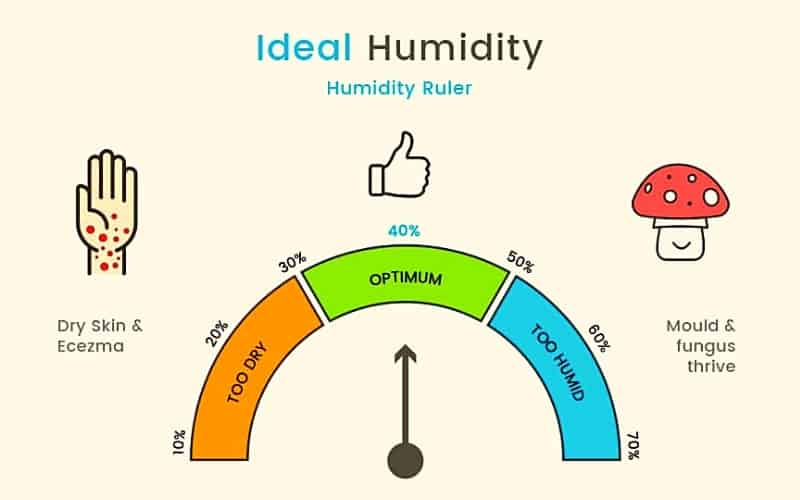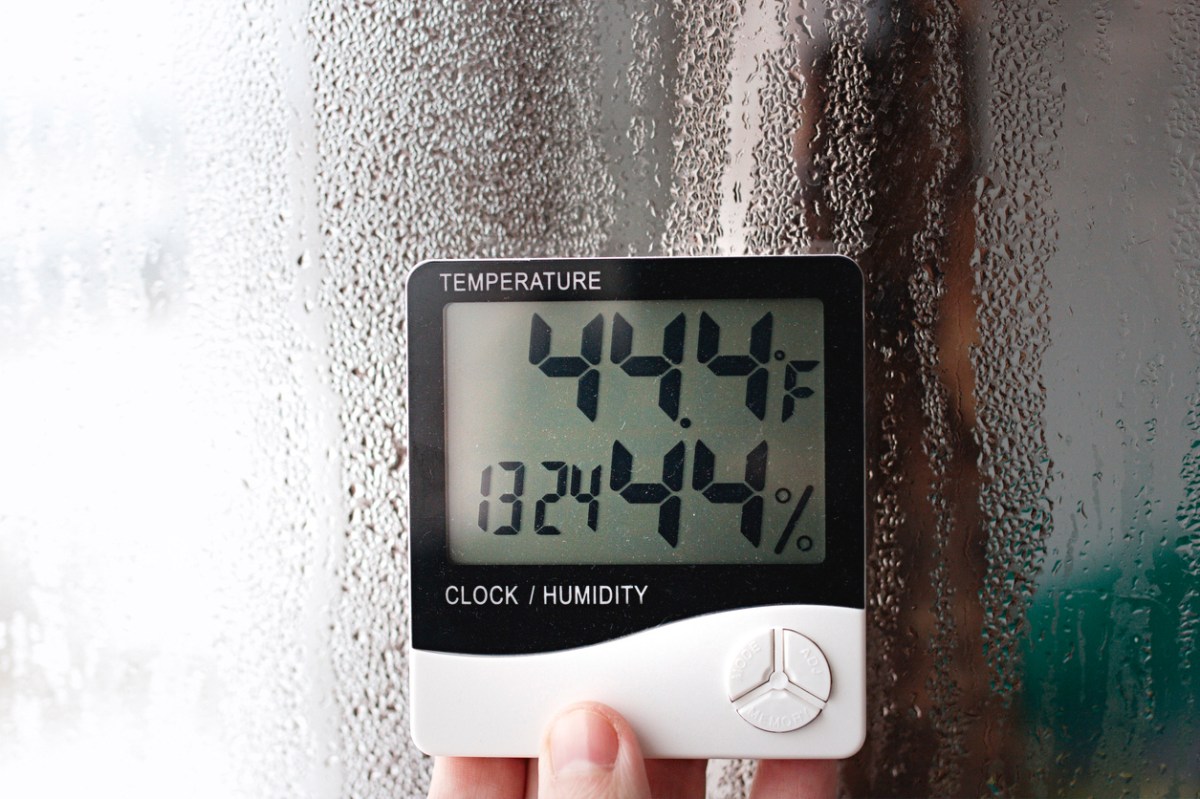How To Check Humidity At Home

How to Check Humidity at Home: A Guide to Energy Savings and Comfort
Maintaining the right humidity level in your home is crucial for both comfort and energy efficiency. Too much humidity can lead to mold growth, while too little can cause dry skin and respiratory issues. More importantly, imbalanced humidity can significantly impact your HVAC system’s performance and, consequently, your energy bills. This article provides a comprehensive guide to checking humidity levels at home, understanding the implications, and implementing strategies for maintaining optimal conditions.
Why Humidity Matters for Energy Efficiency
Humidity affects how your body perceives temperature. High humidity makes the air feel warmer than it is because it hinders the evaporation of sweat, your body's natural cooling mechanism. Conversely, low humidity makes the air feel cooler. This perception directly impacts your thermostat settings. According to the Energy Star program, properly managing humidity can reduce your reliance on air conditioning in the summer and heating in the winter, potentially saving you up to 10% on your energy bills.
Moreover, excess humidity forces your air conditioner to work harder to remove moisture from the air, increasing energy consumption and potentially shortening the lifespan of your unit. Dry air, on the other hand, can make your heating system less efficient, as it requires more energy to raise the temperature of dry air.
Methods for Checking Humidity Levels
Several methods exist for checking humidity levels in your home, ranging from simple DIY techniques to sophisticated smart home integrations.
1. Using a Hygrometer (Humidity Meter)
A hygrometer, also known as a humidity meter, is the most accurate and reliable tool for measuring humidity. These devices are relatively inexpensive and readily available at most hardware stores and online retailers. There are two main types of hygrometers:
- Analog Hygrometers: These use a needle and dial to indicate the humidity level based on the expansion and contraction of a moisture-sensitive material. While affordable, they may require calibration and are generally less precise than digital models.
- Digital Hygrometers: These provide a digital readout of the humidity level and often include temperature readings as well. Digital hygrometers are generally more accurate and easier to read than analog models. Some advanced models even track historical data.
How to Use a Hygrometer:
- Place the hygrometer in a central location in your home, away from direct sunlight, drafts, and heat sources.
- Allow the hygrometer to sit for at least 20-30 minutes to acclimate to the room's conditions.
- Read the humidity level displayed on the device.
- For best results, monitor humidity levels in different areas of your home, especially in basements, bathrooms, and bedrooms.
2. DIY Methods: The Ice Cube Test
While not as precise as a hygrometer, the ice cube test can give you a rough estimate of your home's humidity level. This method is useful if you don't have a hygrometer readily available.
How to Perform the Ice Cube Test:
- Place several ice cubes in a glass.
- Let the glass sit in the room you want to test for 3-4 minutes.
- Observe the glass:
- If condensation forms on the outside of the glass, but doesn't run down the sides, the humidity level is likely acceptable.
- If condensation doesn't form, the air is likely too dry.
- If condensation forms quickly and runs down the sides of the glass, the air is likely too humid.
Keep in mind that this test is not very accurate and is only meant to provide a general indication of humidity levels.
3. Smart Thermostats and Humidity Sensors
For homeowners embracing smart home technology, smart thermostats and dedicated humidity sensors offer convenient and accurate humidity monitoring. Devices like the Ecobee SmartThermostat, Nest Learning Thermostat, and sensors from brands like Aqara and SensorPush can track both temperature and humidity levels and display the data on your smartphone or tablet. Some smart thermostats can even automatically adjust your HVAC system to maintain optimal humidity levels.
Benefits of Smart Home Integration:
- Remote Monitoring: Check humidity levels from anywhere using your smartphone.
- Historical Data: Track humidity trends over time to identify potential issues.
- Automated Adjustments: Some smart thermostats can automatically adjust your HVAC system to maintain optimal humidity levels.
- Alerts and Notifications: Receive alerts when humidity levels fall outside your desired range.
- Integration with other Smart Home Devices: Integrate with humidifiers, dehumidifiers, and smart vents for comprehensive climate control.
Ideal Humidity Levels and What They Mean
The ideal relative humidity (RH) level for your home is generally between 30% and 50%. This range provides a balance between comfort and health. The Environmental Protection Agency (EPA) recommends keeping indoor humidity below 60% to prevent mold growth.
- Below 30%: Air is too dry. Can cause dry skin, irritated sinuses, and increased susceptibility to respiratory infections.
- 30-50%: Ideal range. Comfortable and healthy.
- 50-60%: Acceptable, but monitor closely. Mold growth becomes more likely at these levels.
- Above 60%: Too humid. Can promote mold growth, attract pests, and damage furniture.
Addressing Humidity Issues: Solutions for Energy Savings
Once you've determined your home's humidity levels, you can take steps to address any issues. Here are some strategies for maintaining optimal humidity and maximizing energy savings:
1. Controlling Excess Humidity
If your home is too humid, consider the following:
- Use Dehumidifiers: Portable dehumidifiers can effectively remove moisture from the air in specific rooms. Whole-house dehumidifiers integrated into your HVAC system provide more comprehensive humidity control. Look for Energy Star certified models for maximum efficiency.
- Improve Ventilation: Ensure proper ventilation in bathrooms and kitchens by using exhaust fans when showering, bathing, and cooking.
- Fix Leaks: Address any water leaks promptly to prevent moisture buildup.
- Properly Vent Appliances: Ensure that clothes dryers are properly vented to the outdoors to prevent moisture from entering the home.
- Consider a Whole-House Ventilation System: A heat recovery ventilator (HRV) or energy recovery ventilator (ERV) can help circulate fresh air and control humidity levels throughout your home.
2. Adding Humidity to Dry Air
If your home is too dry, consider the following:
- Use Humidifiers: Portable humidifiers can add moisture to the air in specific rooms. Whole-house humidifiers integrated into your HVAC system provide more comprehensive humidity control.
- Boil Water: Simmering a pot of water on the stove can add moisture to the air (but be mindful of safety).
- Indoor Plants: Certain houseplants, such as ferns and spider plants, can help increase humidity levels.
- Avoid Over-Heating: Lowering your thermostat setting slightly can help prevent the air from becoming too dry.
3. Optimizing Your HVAC System
Your HVAC system plays a crucial role in humidity control. Consider the following:
- Regular Maintenance: Ensure your HVAC system is properly maintained, including cleaning or replacing air filters regularly.
- Upgrade to an Energy-Efficient System: Consider upgrading to a high-efficiency air conditioner or heat pump. Look for models with features like variable-speed compressors that can better control humidity. Check for federal, state and local rebates and tax credits on Energy Star certified equipment.
- Proper Sizing: Ensure your HVAC system is properly sized for your home. An oversized system may cool the air too quickly without removing enough moisture.
- Professional Assessment: Consult with an HVAC professional to assess your home's specific humidity control needs and recommend appropriate solutions.
ROI and Energy Savings
Investing in humidity control measures can provide a significant return on investment (ROI) through energy savings, improved comfort, and reduced risk of mold growth and property damage. For example, a whole-house dehumidifier can cost between $1,500 and $3,000 installed, but it can save you hundreds of dollars per year in energy costs and prevent costly mold remediation. Upgrading to a more efficient HVAC system with better humidity control can also provide long-term energy savings and improve indoor air quality.
Conclusion
Checking and managing humidity levels in your home is an essential step towards creating a comfortable, healthy, and energy-efficient living environment. By using the methods outlined in this article, you can accurately assess your home's humidity levels and implement strategies to maintain optimal conditions. Whether you choose a simple hygrometer, a smart thermostat, or a comprehensive HVAC upgrade, taking control of your home's humidity will not only improve your comfort but also save you money on your energy bills.









